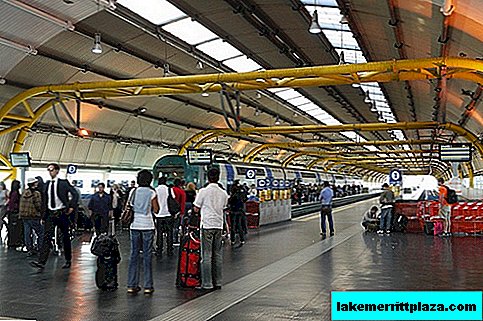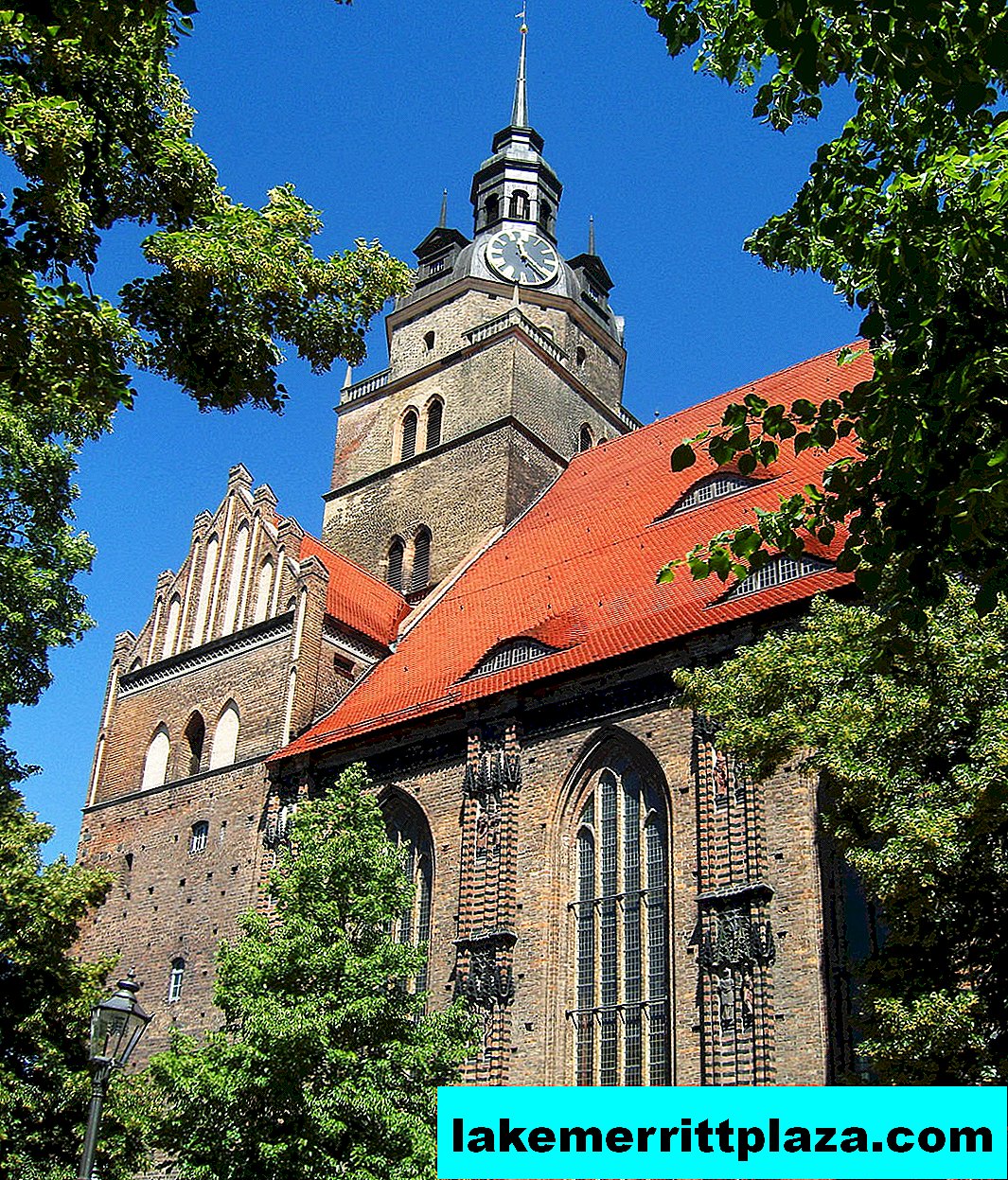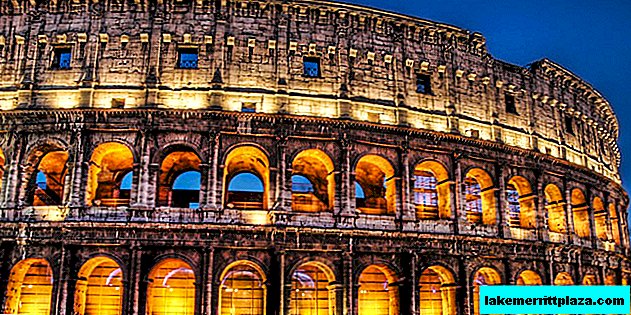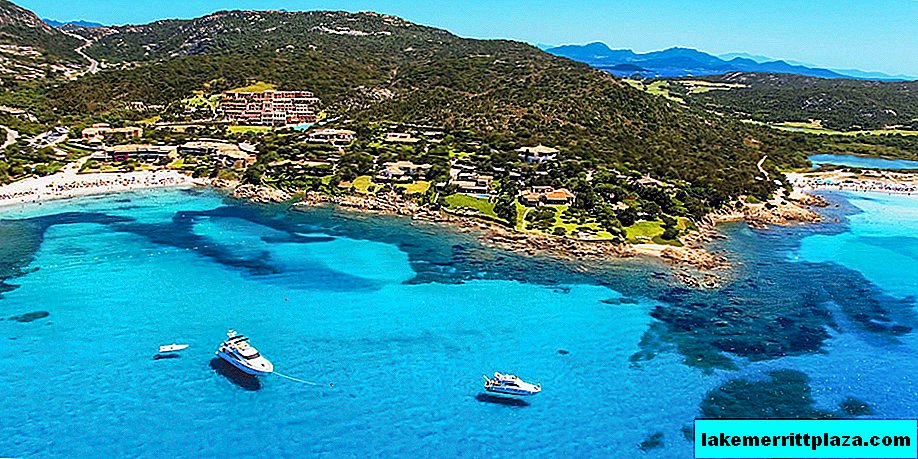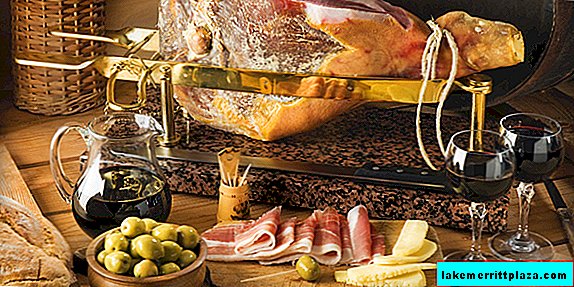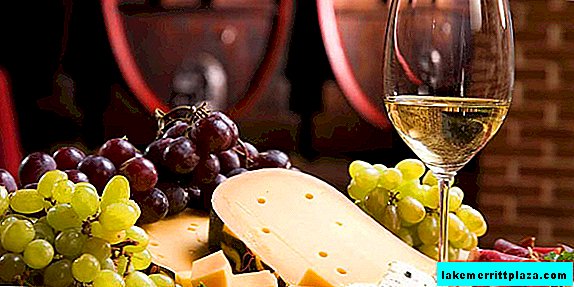Provolone (Provolone) - hard Italian cheese with low fat content. It belongs to the category "Paste Filate" (Paste Filate). Provolone has its own zest not only in taste and aroma, but also in a wide variety of forms. You can find cheese in the form of a pear, a tightened sausage, cone, melon or peeled mandarin. Eyes run up at the sight of such beauty! Forms are forms, but they don’t look at cheese, but use it. Let’s find out: “What kind of beast is this provolone, and with what it is eaten.”
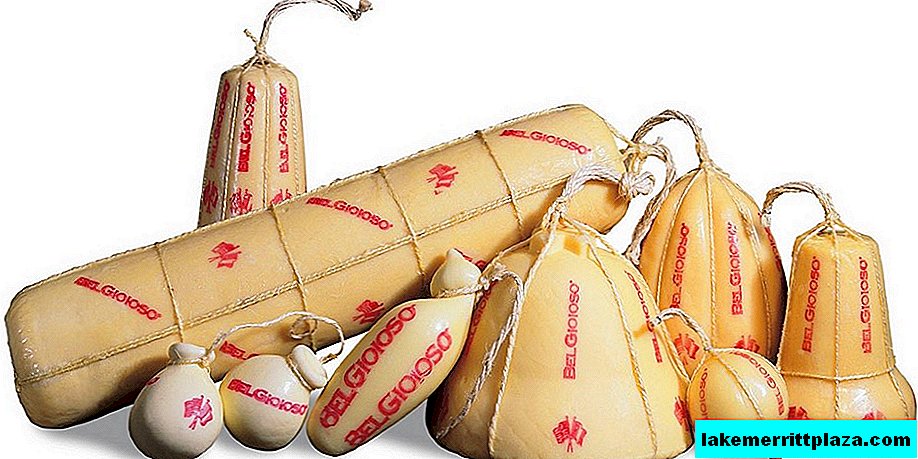
History of occurrence
Provolone has a relatively short history. He was born in southern Italy in the second half of the 19th century. Its name comes from the Neapolitan word provola, which indicates its spherical shape.

The unification of Italy in 1861 allowed to overcome the barriers between the regions, and made it possible for the cheese makers of the southern regions to settle on the Padan Lowland. In order to increase the production of filata pasta cheeses, which have fans both in the northern part of the republic and abroad, the Italian government has facilitated the transfer of dairy farms from south to north, where milk was abundant. This area, rich in fertile lands, also had a well-developed infrastructure, which allowed to increase the scale and quality of cheese produced.
For the first time in literature, the name "Provolone" appears in 1871 in Mancini's Dictionary of Agricultural Terms. A completely original cheese, it differed from its counterparts in the category by the ability to ripen, without drying, for a long time. As a result, it later became widespread.
In 1996, the Provolone Valpadana and in 2010 the Provolone del Monaco received the status of cheese with a protected name by origin (DOP).
It is worth noting that the Italians, speaking of the classic "Provolon", often do not use prefixes, but mean Valpadana.
How do
In Italy, several versions of provolone are released, two of which are related to DOP. Italian provola (Provola) and proleta (Provoleta) are also varieties of base cheese. There is no need to study the manufacturing features of each species, since the fundamentals of all formulations are very similar. Therefore, we will present to your attention the production technology of "Provolone Valpadana".
Classic provolone is produced in several regions of Italy: Emilia-Romagna, Lombardia, Veneto. Milk is taken exclusively from the Frisian breed of cows. Today, as before, curdling of raw materials occurs due to rennet of animal origin.
But before using the enzyme, cheese makers enrich the milk with a whey starter (the liquid remaining in the boiler after making cheese on the previous day) and leave to stand overnight. This substance is rich in microorganisms and is valuable in that the enzymes contained in it are transmitted every day from cheese to cheese.
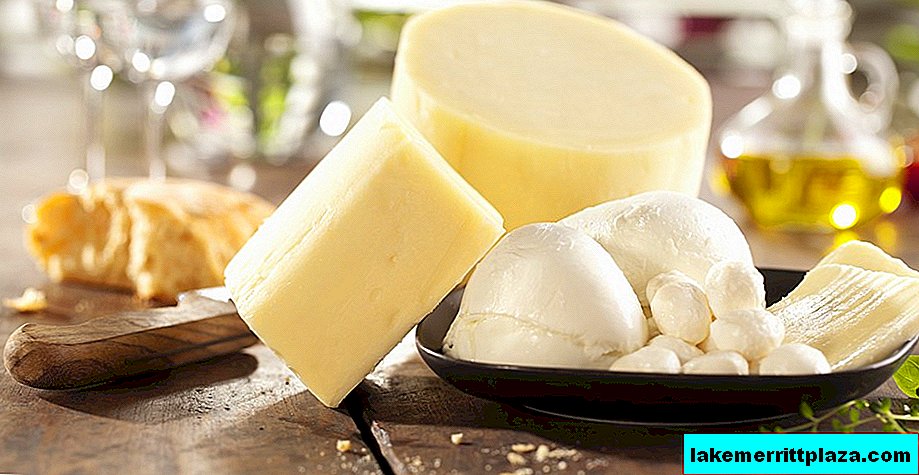
At the second stage, the curd clot is cut and subjected to heating, immersed in a hot liquid, to obtain a "rubber" consistency, characteristic for cheeses of the "Filat Pasta" category.
Next, the cheese is placed in special perforated molds in order to give it the final look: bowl, pear, cone, mandarin. Before sending for maturation, the last component is added - sea salt, placing cheese heads in a salted solution. After this, the provolone is washed in cold water and coated with wax to create a protective film.
“Binding” with special ropes is another tribute to a long tradition. Ripening can last several days, or maybe more than a year, depending on the type of cheese that they seek to get.
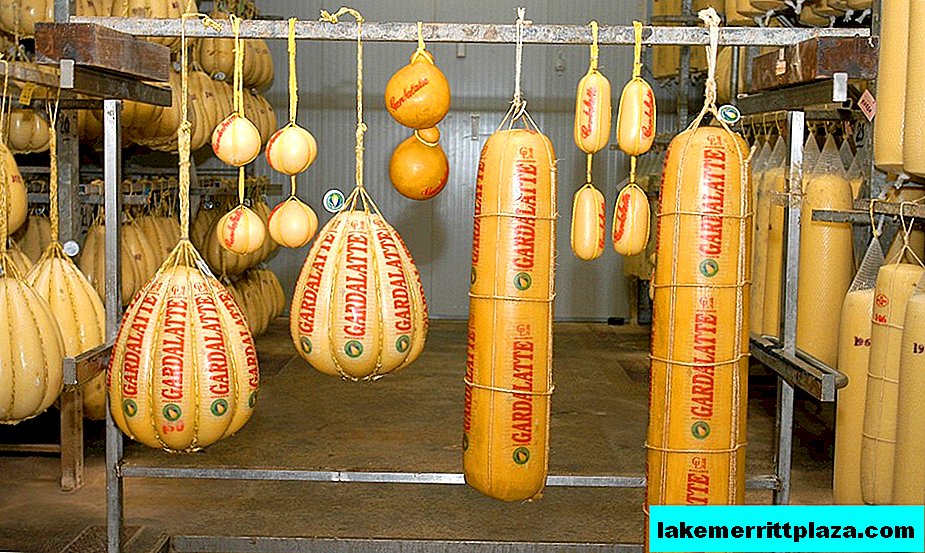
Cheese heads can weigh from a few hundred grams to 100 kg.
They also produce provolone (far from the classics) in the USA, Bolivia, Argentina, Brazil and Uruguay. In these countries, cheese is more often produced in the form of small cylinders 1-2 cm high and 10-15 cm in diameter.
Characteristic of Provolone del Monaco
Provolone del Monaco is a DOP cheese produced in the province of Campania from the milk of cows from the city of Agerola.
Peasants who brought their products to the port of Naples to protect themselves from the cold and moisture, wrapped themselves in cloaks of burlap, reminiscent of monastic vestments. Neapolitan merchants began to call farmers monks, hence the name of the cheese literally meaning "provolon from the monks."
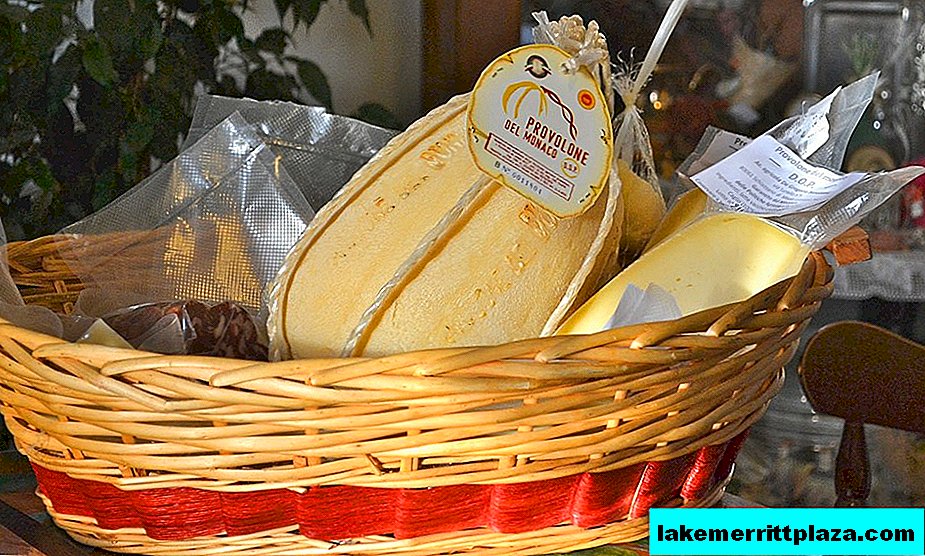
Distinctive features of del monaco:
- The shape of a cheese head resembles an elongated melon weighing 2.5 kg, but not more than 8 kg;
- The crust is thin, yellowish, almost smooth with longitudinal grooves from the ropes that divide the cheese into 6 parts;
- The exposure period is at least 6 months;
- The cheese body is light yellow, elastic, soft, has characteristic openings the size of a bird's eye;
- The fat content in dry matter is at least 40.5%;
- The taste is sweet, buttery, slightly spicy.
The distinctive taste and aroma of cheese is determined by the original combination of the characteristics of dairy raw materials, climatic conditions of the production area and old traditions of cooking.
Varieties
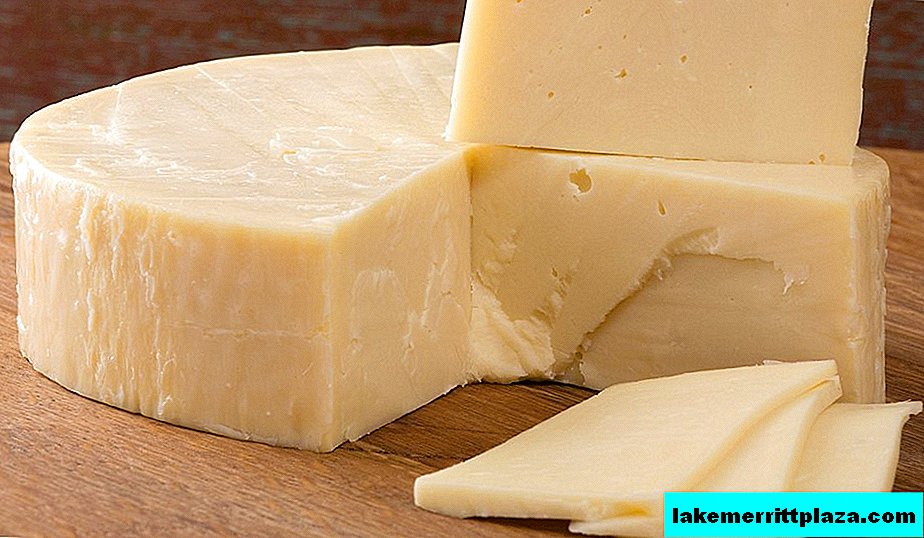
In Italy, it is customary to distinguish only two varieties of classical provolone: dolce and piquant. Although in other countries smoked cheese is put in this row as the third option.
- Provolone Dolce or sweet (Provolone Dolce) is a cheese made from cow's milk, which is curdled with the help of a calf's renin. Ripens no more than 2-3 months. The taste is creamy, milky, sweetish. The texture is smooth and soft. Cheese heads are relatively small (weight up to 5.5 kg).
- Provolone Picante or piquant (Provolone Piccante) - produced using rennet lambs or kids. Ripening lasts from 3 months to a year or more. This cheese is drier, sharper and piquant, and the texture is more resilient than that of Dolce. It has a strong aroma with a long finish. Cheese heads can reach a mass of more than 90 kg.
- Provolone Affumicato or smoked (Provolone Affumicato) - is made by smoking and further aging fresh cheese for at least 3 months. Smoke houses use apple wood more often. The taste is spicy with a slight aroma of smoke. The mass is light yellow, elastic. The color of the crust is from straw to light brown.
It is worth noting that piquant has the most striking taste. And, if you tried only the sweet version, the aroma of ripe cheese will be a pleasant discovery for you.
What to eat and how to store
Recipes that use provolone vary by variety. Cheese maximally shows its taste when consumed without heat treatment.
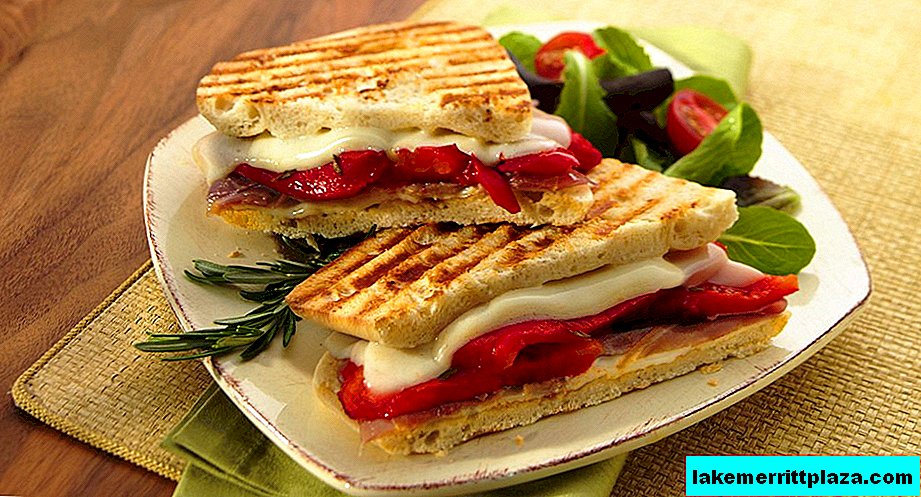
Provolone goes well with bread. But, if for dolce it is preferable - sesame or classic, then for piquant it is better suited - from durum wheat.
Sweet cheese is often consumed as part of cheese slices with fresh vegetables (such as radishes) or olives. Remarkable accompanied by mustard Cremona, honey and fig jam. Dolce is used as an aperitif for classic sparkling wines or young fruit wines such as: Novello, Barbera, Valcalepio.
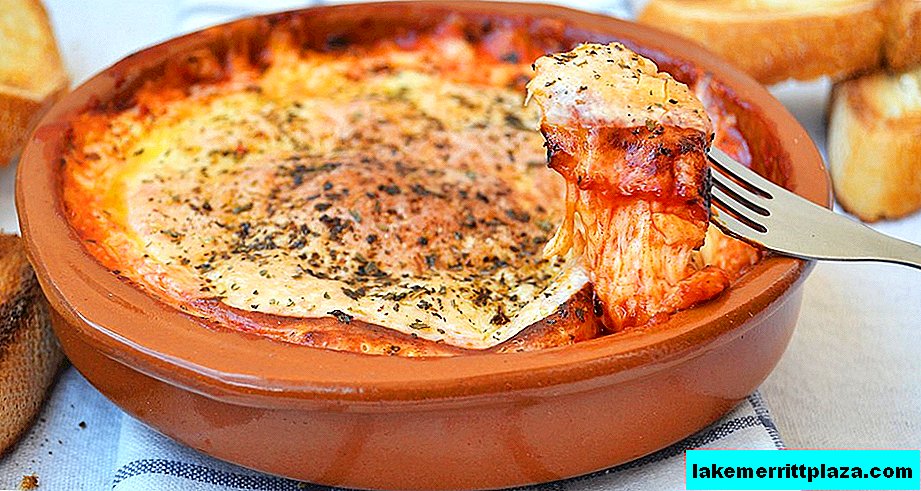
Piquant provolone is versatile and is used with fresh vegetables, olives, pears, salami. It is often used in a grated form as a component of dishes such as omelets, pizza, pasta, pies, baked potatoes, bruschettas and sandwiches. It goes well with aged red wines: Amarone Valpolicella (Amarone della Valpolicella), Refosco (Refosco) and Barbaresco (Barbaresco).
Smoked cheese is eaten on its own or as a component of sandwiches.
Del Monaco in Italy is served with hot bread or tortillas, combined with ripe red wines.
How to replace
How to replace provolone in recipes? Choosing the right option is easy: mozzarella, parmesan (at best) or any domestic semi-hard cheese. But it is worth noting that it is impossible to make a substitution without loss of taste.
Storage
Store cheese preferably in the least cold part of the refrigerator (not under the freezer or near the wall). Sliced cheese must be wrapped with cling film, foil, paper or cloth and, to the extent possible, avoid contact with other varieties. Before serving, you need to get the provolone from the refrigerator for at least an hour.
Calorie content and benefits
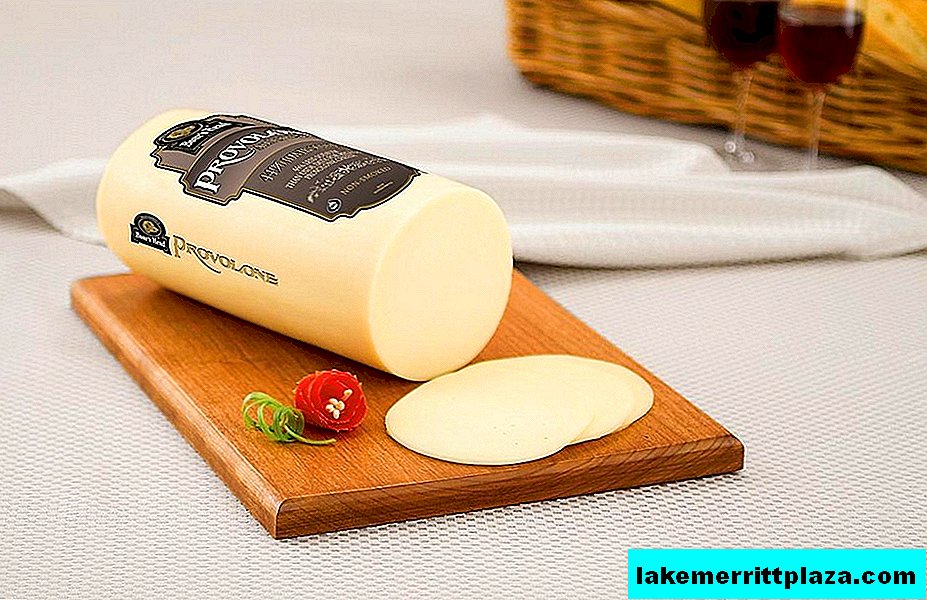
A species of provolone does not significantly affect the nutrient content. Due to the relatively high calorie content, doctors recommend consuming no more than 30 g per day. This portion of cheese contains:
- 98 kcal, which is about 5% of the daily norm (NAM) at a 2000-calorie diet;
- Fats 7.5 g (11% DN);
- Proteins 7.2 g (14% DN);
- Carbohydrates 0.6 g (1% DN);
- Cholesterol 19.3 mg (6% DN).
You should not be afraid of the presence of cholesterol, because it is not a terrible monster from advertising that destroys the entire body, but a very important component, as it is indispensable in the synthesis of many hormones. But healthy people should use it sparingly.
It is rich in provolone with vitamins and minerals:
- Calcium 21% DN - promotes healthy bones and teeth, muscle functioning and transmission of nerve impulses;
- Phosphorus 14% Nam - maintains the integrity of bone and dental tissue;
- Sodium 10% DN - participates in the proper functioning of the nervous system and maintains fluid balance in the body. It must be remembered that excess sodium can lead to water retention and, as a result, an increase in blood pressure;
- Vitamin A (5% DN) - supports eye health, regulates bone growth and cell division;
- Vitamin B12 (7% DN) - an important component of the proper functioning of the central nervous system, is involved in the synthesis of certain enzymes;
- Riboflavin (5% DN) - Supports the immune system, regulates human growth and reproductive functions.
In many countries of the world, Provolone is considered one of the most healthy cheeses.
Price in Italy and in Russia
Due to the original manufacturing recipe and long ripening time, the price of DOP category wire is quite high. In Italy you can purchase it in the range of 5 to 12 euros per 1 kg, depending on the producer and maturity of the cheese.
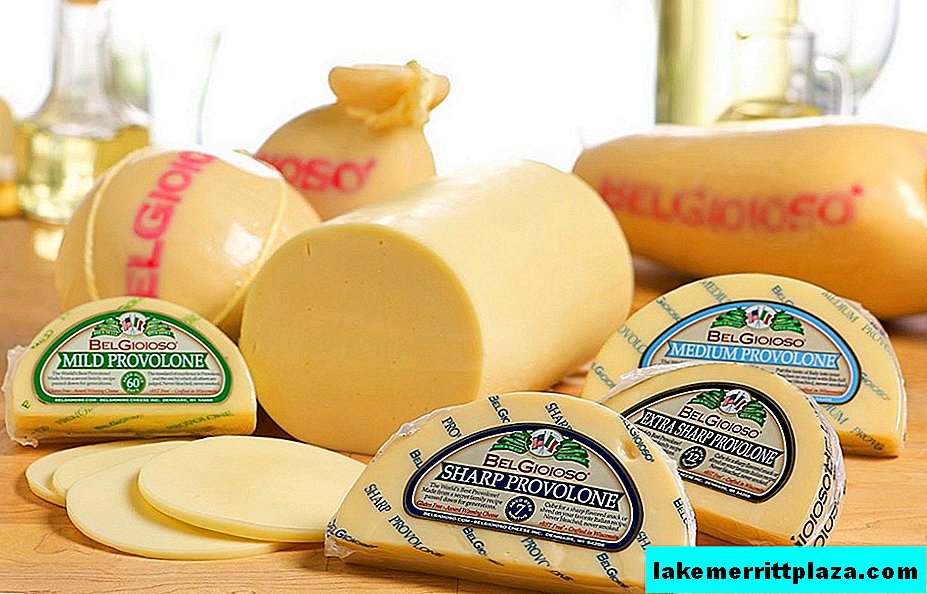
On the expanses of the Russian Internet there are proposals for the sale of classic (as the store claims) provolone at a price of 3300 rubles per 1 kg, as well as variations (wire, provolisi) for 1000-1200 rubles per 1 kg.
So the informative ten minute about cheese provolon ended, our dear readers. Now in your arsenal there is one more argument confirming that it is impossible not to love Italy. Dare, experiment, travel and remember: "Man is not fed with bread alone, but with bread with a slice of provolone!"

